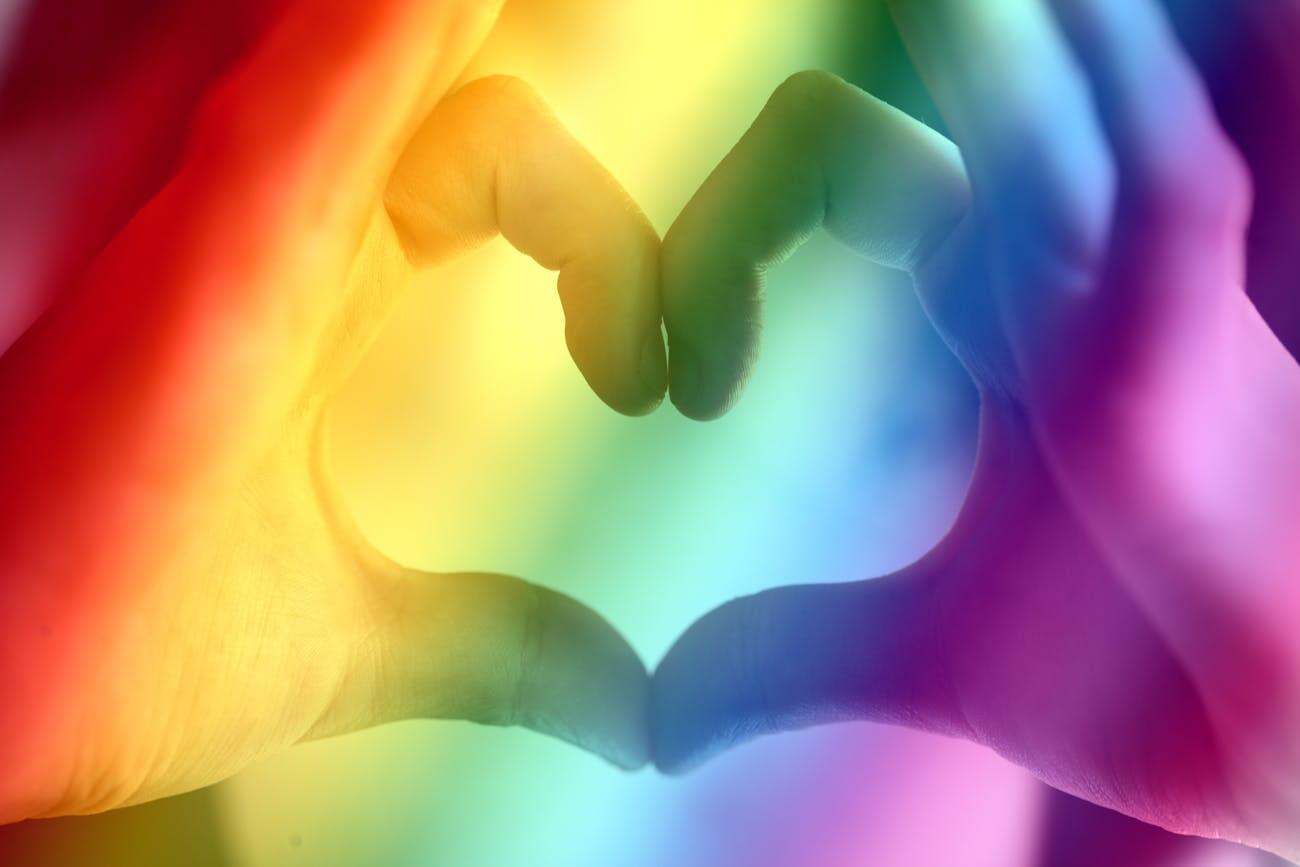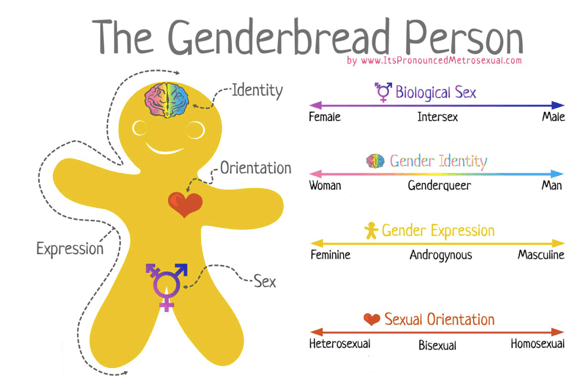
15 Sep Breaking Down Gender, Sex, and Sexuality: What Parents Need to Know
By Kit Margeotes, LSW
What does it mean when my child says they’re transgender? How can she possibly know that at this age?
It’s just too hard to remember to use they/them pronouns – she knows what I mean!
It was fine when he said he was gay, but now my son is telling me he’s a girl – that’s just too much to handle!
Let’s talk about gender.
Many times, I have seen well-meaning parents of transgendered teenagers asking me the above questions. Sometimes they’re bluntly phrased; too often they end up accidentally creating a dissonance between themselves and their teenager, who is impatient to be understood and accepted for who they are. Often parents are confused on the variations within gender, sex, and sexuality, and find it difficult to understand concepts that turn the basic binary they’d grown up with on its head.
But always, these sentences are rooted in the same fear: my child is changing and I don’t understand how. I worry this could hurt them, and I only want them to be safe.
So let’s break it down: what it means when your child tells you they’re transgender, non-binary, genderqueer, or any other label they might decide suits them.
I’d like to refer to the Genderbread Person.
Created by Sam Killermann, the Genderbread Person is a useful tool to help us break down gender, sexuality, and expression. The first lesson it teaches us: nothing is a binary! It’s far more useful to think of gender, sex, and sexuality in terms of a sliding scale.

Biological Sex
This is the sex you were born with, identified by physical characteristics both from birth and later developed through puberty. This is how one identifies what body they were born in: males are born with testes and a penis, while females are born with a vagina and ovaries. While most often determined by genitalia characteristics, it can also include other cues as an individual gets older: things like vocal pitch, body hair development, hormones, etc, all identify one’s biological sex.
There are also individuals who are born as intersex: they are born with a combination of male and female biological traits, and do not fit the biological binary. This label covers a great deal of natural bodily variations.
However, for the majority of the population, they are AMAB (assigned male at birth) or AFAB (assigned female at birth).
Gender Identity
This is how one identifies themselves. For the majority of the population, one’s gender identity aligns with one’s biological sex: a person born with a vagina identifies as a woman, while a person born with a penis identifies as a man. This is known as cisgender, cis- being an antonym for trans-. The majority of the population identifies as cisgender, even if they might not use that label for themselves.
However, sometimes biological sex and gender identity don’t align, and thus we get transgender: someone who was born with one set of biological characteristics feels happier identifying with the opposite sex. Sometimes someone who is transgender will elect to get genital reconstructive surgery to further align with their gender; other times, they may be perfectly happy with their body as-is!
There is also another option: nonbinary, also sometimes known as genderfluid or genderqueer. For some, neither male nor female fully feels right, and they do not wish to identify with either. Sometimes, the pronouns they/them will be used to avoid associating with either gender. Sometimes nonbinary people will identify heavily with one gender, but still wish not to conform to a label; other times this identity will vary.
Gender Expression
This is how one, literally, expresses one’s gender as interpreted through cultural understanding of what is deemed male or female.
We all have gender expression in our lives! How we dress, act, speak, behave, all feeds into how we wish to express ourselves. If a cisgender woman puts on a dress, makeup, and high heels, that’s an example of gender expression: she’s enjoying being identified as feminine. As with all examples here, this can go on a binary: someone who is cisgender might still enjoy playing with their gender expression. For example, a man might put on nail polish, or a woman might cut her hair short.
Gender expression is a fascinating thing, if only because it changes so much from decade to decade. A cisgender woman wearing pants isn’t anything to write home about now – but in 1950, it was unheard of.
Sexuality
This is to whom you’re attracted to. For some people, this is fairly standard: they identify as heterosexual, meaning that they are attracted to someone of the opposite sex. For others, they’re homosexual, meaning they’re attracted to others of the same sex. There is also bisexuality, or pansexuality: those who are attracted to both sexes.
One’s sexuality is completely divorced from one’s gender. Truly! There is no correlation; whom you are attracted to has no bearing on your gender or how you express it. A transgender woman might be attracted to men and identify as heterosexual; a cisgender man might identify as homosexual.
Sometimes it’s not so clear-cut! A heterosexual woman might be attracted exclusively to men – except for one particular type of woman. A lesbian might solely be attracted to women, but not care if her transgendered partner has a penis, so long as they identify as female.
What you desire both sexually and romantically is unique to you, and has as many variations as you can dream of. Ultimately, it’s up to each individual to determine what they find attractive.
Examples
It’s a lot of terms! Four broad umbrella terms, with subtle variations and nuances for each. It can be confusing – so let’s look at some examples.
John is a cisgender, heterosexual male. His sex is male, as he was born with a penis and testes, and he identifies as a man. John is heterosexual, and is attracted to women. John expresses himself in a masculine way, putting on cologne and working to build up his muscles.
John’s biological sex was male. John’s gender identity is male, which makes him cisgender. John’s gender expression is masculine. John’s sexuality is heterosexual.
Beatrice is a transgender woman. She was born AMAB, or assigned male at birth; her body was born with a penis and testes, and her birth name was Michael. Beatrice found later in life that she prefers to identify as a woman, and made changes to align with that, including changing her name. Beatrice expresses her gender in feminine ways, such as painting her nails, shaving her legs, and wearing dresses. Beatrice is heterosexual, and is attracted to men.
Beatrice’s biological sex was male. Beatrice’s gender identity is female. Beatrice’s gender expression is feminine. Beatrice’s sexuality is heterosexual.
Anthony is a transgender man. Anthony was born AFAB, or assigned female at birth – his body was born with a vagina, and developed breasts as he hit puberty. Anthony knew from a very early age that he identified as a man, and as he has grown older, enjoys expressing himself in that way. Anthony takes testosterone hormones, and has undergone surgery to remove his breasts and allow his body to feel more masculine. Anthony is homosexual, and is attracted to other men.
Anthony’s biological sex was female. Anthony’s gender identity is male. Anthony’s gender expression is masculine. Anthony’s sexuality is homosexual.
Sam is genderneutral. Sam was born AFAB, but does not feel that they identify with either male nor female, but something different. Sam expresses themselves in ways that are both masculine and feminine, including painting their nails and letting their body hair grow out. Sam identifies as pansexual, meaning they are attracted to all genders.
Sam’s biological sex was female. Sam’s gender identity is nonbinary. Sam’s gender expression is nonbinary, and takes cues from both masculine and feminine traits. Sam’s sexuality is pansexual.
Above all else, remember that this isn’t a test! It’s not about getting every term right all the time, but treating everyone and how they identify with respect. You don’t have to understand it all in one go – just abide by a person’s wishes and treat them with dignity.
About the Author: Kit Margeotes, LSW received her Masters Degree in Social Work from Rutgers University, and subsequently earned her license as a social worker (LSW). She is currently working toward her LCSW licensure and is close to obtaining it. She has worked with children, teens, and adults in various clinical settings, including nonprofits and the Newark school system, throughout her internships and work history. In her clinical practice, she utilizes evidence based treatment approaches such as Cognitive Behavioral Therapy (CBT), Solution-Focused therapy, and Psychodynamic therapy to help her clients meet their goals and understand where the struggles they’re facing originate from. When she is not in the therapy office, she enjoys watercolor painting and other artistic endeavors.

